27 July 2020
Children often rebel against their parents. Perhaps out of sheer contrariness they create other worlds, totally different from the ones they come from. Marie-Louise Sciò hasn’t needed to. She feels completely at home in the world she was born into and grew up in, and with time she has made it her realm. A world that was created in 1965 by an American woman, a socialite, and a British aviator who settled in Tuscany and built themselves a refuge in a bay on Monte Argentario where they held endless parties. And so their villa was turned into Il Pellicano, a place where the stars of Hollywood came to relax far from the limelight. The charismatic entrepreneur Roberto Sciò fell in love with this place and in 1979 bought it. Today his daughter Marie-Louise, CEO and Creative Director of the group Il Pellicano Hotels, keeps it in a perfect balance between the contemporary and the traditional. Along with La Posta Vecchia, a noble residence at Palo Laziale (on the coast north of Rome), owned by Jean Paul Getty in the sixties, and the Mezzatorre Hotel on Ischia, renovated a year ago. While we talk on Facetime, with a connection that comes and goes, she shows me the sea beneath her balcony. Marie-Louise has an attentive gaze, one that can be in more than one place at once, one foot here and the other in that world, young and old together, just like her hotels, which, in this, are all alike. They are family resemblances, those of an extended family that comprises everything on which she lays her eyes—and hands.
Where did you spend the period of lockdown?
Half in Rome and half at La Posta Vecchia.
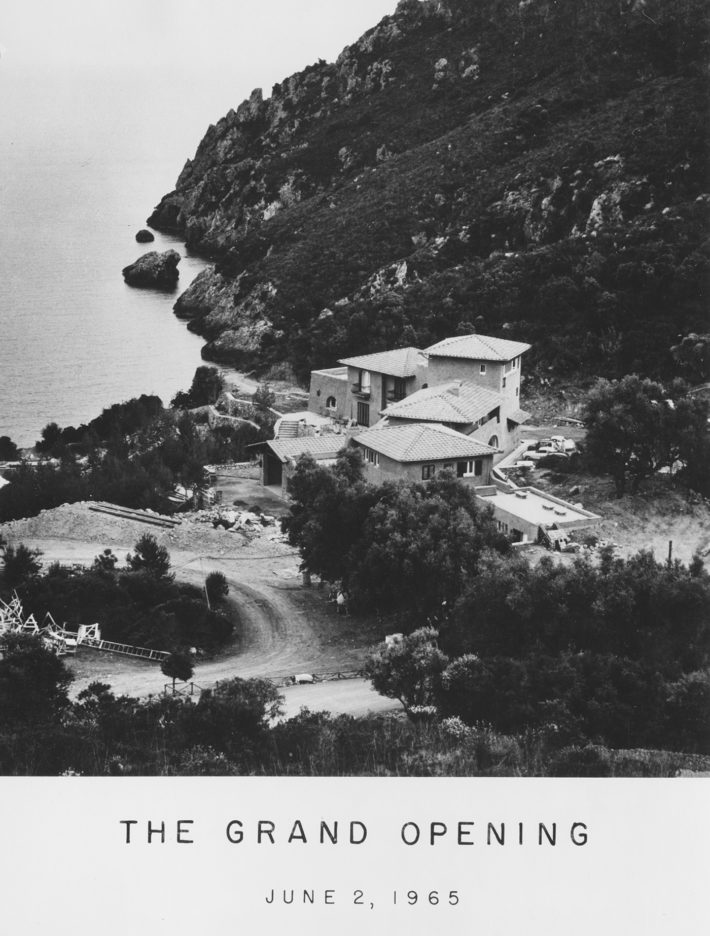
The Grand Opening, June 2, 1965. Photo: John Swope, © Hotel Il Pellicano.
I’ve looked at your Stories on Instagram from Il Pellicano. You reopened on June 26.
I’m very happy to be back here, it’s a special place.
I read in an interview you gave that you think many hotels today have no identity. They invest a lot in design, but then as soon as you scrape the surface you find there’s no substance underneath. What do you mean by substance?
Every point of contact you have with the guest is an opportunity to say something. It all depends on the choices you make. Buying books by the meter is an example. The interior decorator arrives and asks for three and a half meters of books to fill the bookcase. You can fill it like that or with content, with substance, with books that are worth reading, that have something to say to you. When I speak of substance this is what I’m talking about.
About a careful choice.
About taking obsessive care of everything. There are hotels where they have spent millions of euros on each room, with marble everywhere. Then in the mini bar there’s a poor-quality fruit juice, there are the kind of products you find at a highway rest stop.
Second-rate choices.
It’s laziness, and it’s also a financial, business choice. For me putting fruit juices you can find anywhere in my hotels is no good. A journey is a matter of discovery. You can get the guest to discover a fruit juice, a book, a movie. We are responsible for this.
Perhaps it also depends on the style of the person in charge.
For me running hotels is not just a question of making money. We are dealing with people’s time.
I often see pictures of luxury hotels that are all the same, that offer the same treatment. For instance: the bathroom with no door is the height of fashion at a certain moment and everyone installs them, even if they have little to do with the location. Don’t you find there is a certain standardization of luxury?
This is a basic error. Trends shouldn’t be followed because by definition they don’t last. We want to stay for a long time. Even when I act as a consultant for hotels the approach is this. I ask: what do you want to be when you’re grownup? Do you want to be the hit of the moment or do you prefer a slow and lasting release?
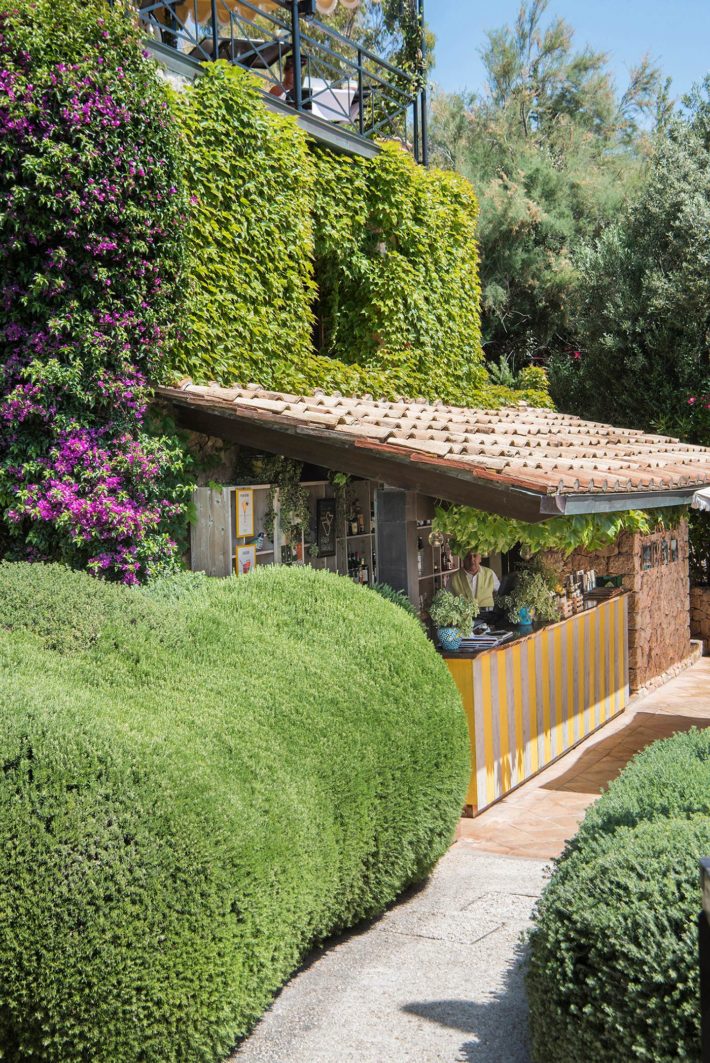
Open-air bar, Hotel Il Pellicano, Porto Ercole. Courtesy of Hotel Il Pellicano.
You’re a sort of hotel doctor. How do you diagnose a hotel?
I start from the potential, I try to protect the spirit of places. Often the architect and the designer arrive and put their egos into it, but hotels are full of stories: it’s all there, you just have to blow the dust off, you need to do some research. They have their style, their DNA is there. You find it in the photos, you hear it in the stories, there are many elements. You always have to start from this.
For example?
I’m working on a hotel in Berlin, a place where soldiers used to go during the war. There was this soldier whose story I read, who would go there whenever he could. Opposite the hotel there was a nightclub where they secretly played swing (it was illegal). He took the room on the second floor with a view of the theater and listened to the swing in the distance. It’s a beautiful story, that needs to be brought to light: I imagined this soldier at the window and thought that the hotel’s music ought to be consistent with this story. Let’s bring back the swing!
A bit of archeology.
You need to find out what has shaped them, who has raised them. Hotels are like people. The elements are there, we have to do what the conductor of an orchestra does: put them together, get them to play.
It’s not easy to insert contemporary taste into places rich in history. How do you find the right thing, the one best capable of holding a dialogue with the memory of a particular place?
It’s true, trying to establish a dialogue between what has been and what is there today, with so many ingredients, is complicated. When I did up the rooms of Il Pellicano I maintained a great simplicity in the decor. If you go to other hotels nearby, you’ll find 57 kilos of drapes, pomp, a lot of opulence. Il Pellicano has always been simple despite the great care taken over it, and notwithstanding the contemporary additions has succeeded in preserving the genuine character of a beautiful house by the sea from the sixties. There is nothing that shouts either 2020 or the 1960s. We try very hard to keep the two periods together, so that Il Pellicano can last in time.
How did you choose the colors yellow and white?
As a little girl I used to lean out from the terrace and look down. There were red and blue beach umbrellas. You can see them in many of the photos taken by Slim Aarons. When I came to work here the deckchairs were green, contrasting strongly with the white surface, the towels were a boring beige, dull in comparison with my memory of that view. A bit of happiness was needed. I thought of stripes. My grandmother was American and used them a lot. Then yellow, which means summer, sunshine. That’s all, nothing more.
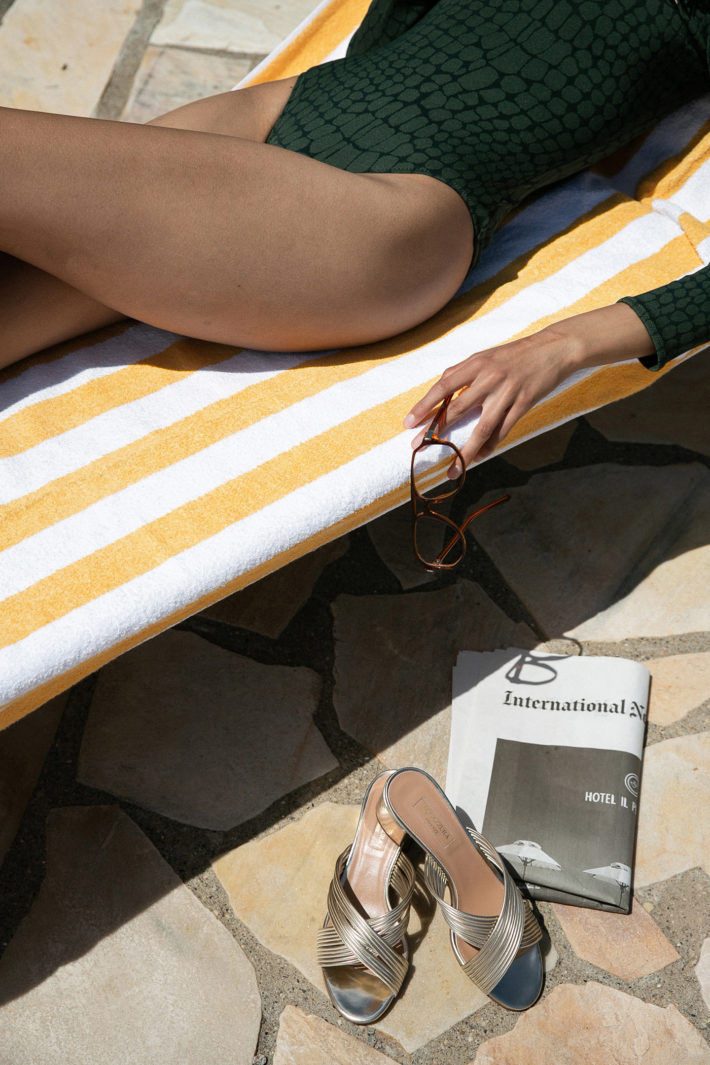
Bodysuit Crocodile, Issimo x Solid & Striped; Perugia sandals, Aquazzura; La Mamma Optical glasses, Issimo x L.G.R.
Yellow and white create a sense of freshness, joy.
That’s right. We shouldn’t be pompous and arrogant, but light and joyful. Which doesn’t mean with no depth.
On the contrary, it’s something hard to attain.
Yes, and it’s a mixture of opposites. It all seems straightforward, almost automatic, but behind there is absolute dedication, a maniacal attention to detail. I have a boundless passion for the hotels and I have a long list of hotels on which I’d like to lay my hands.
Which ones?
My dream hotel is the Hotel des Bains at the Venice Lido. And the Plaza in New York, which they’ve ruined. There are so many of them with an incredible history that has not been brought to light.
What’s the reason for this, a lack of culture?
There are a number of factors. Economic ones, of course, but not just those. When I had to do up Il Pellicano I interviewed a lot of architects who pontificated in various ways: “This is my style, we do everything in steel or everything floral, Provence.” But what Provence? Too much ego. Every place has its specific characteristics. Hotels need to be done with the same intimacy you do your home.
You seem perfectly at home in your world. What you do is part of you, you like it. Is that right?
Yes. I worked for two years in New York in a real-estate agency—apartment blocks to sell, the only objective was to make as much money as possible. There I realized what it was I didn’t want to do. There was no emotion, just business, whereas you can do business and also put a bit of heart into it. At the beginning it was difficult. The hotel world was a closed one, things were done in a certain way, period. Never having studied the hospitality industry I had a different sort of mental freedom and I went to a university that taught me to think.
What university?
I studied architecture at the Rhode Island School of Design, but with a particular approach. It’s as if I’d studied painting, the method was very much based on critical thinking. There was a project that taught me a great deal, it lasted three months: the first thing they gave us to design was a container for water.
Water?
Very complicated. For me, the container for water was a glass. But then I started to think about water in nature, what contains it, and things changed. Later on, they had us design another container, to connect to the first, and only at the end did they tell us it was a project to construct a device for filtering water. If they had told me at the outset, I would have tried to find out how a system for filtering water works and I’d have copied it, but that’s not what happened. It was all like that.

The Brigitte bikini, Issimo x Solid & Striped.
An application of these studies at Il Pellicano?
I always try to get involved in the processes. Instead of buying the uniforms, for example (they’re all horrible!), I had them made to design. And then the cookery book with Juergen Teller, Eating at Hotel Il Pellicano. The chef at Il Pellicano had to write a book of recipes, but there are lots of cookery books and they’re boring. We took it as an opportunity. I’d just seen Salvador Dalí’s book Les dîners de Gala, and wanted to do something new, a book that could be put in different sections of a bookstore: art, cooking, travel.
On the subject of doing something new, you just launched Issimo, a platform that speaks about the Italian spirit in a pop way, combining online sales with editorial analysis.
Yes, it’s the summation of years of work and thought. You’ll find everything there. It’s not just e-commerce, it’s a true lifestyle platform. I’m driven by a great ardor, and so I can never do things on a small scale. I always think big.
You wanted to create a world.
Yes, I wanted to take our philosophy, our style, our values into the online world.
Are you a nostalgic person?
Huh. I’m melancholic, I like melancholy.
Speaking of style and taste, in Rome they try to keep up with the times, but they never succeed. Why is that, in your view?
It’s true, in Rome they just can’t do it. I don’t know why, I haven’t worked it out yet.
Tendencies don’t last, they’re immediately out of key, false.
Rome can’t be contemporary, it just can’t manage it.
They ought to let you have a go.
Fat chance of that! The Roman Empire officially ended centuries ago, but a lot of people don’t seem to have noticed. They are bogged down mentally in that past glory. That’s the problem.
I see you always in contact with places that have a great history behind them. How important for you is the history of a city or a place?
It depends. I really enjoyed Lapland and Patagonia too.
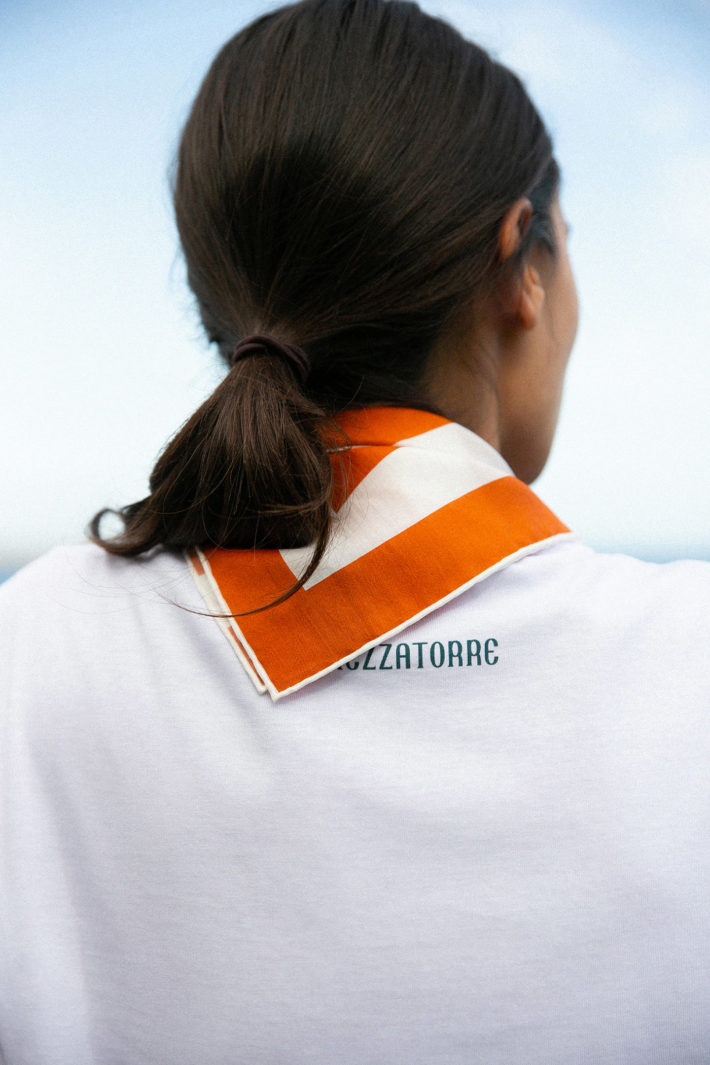
La Posta Vecchia scarf, 16h23, Issimo x Les Belles Heures; Mezzatorre T-shirt, Issimo.
Relaxing?
Relaxing and necessary, every now and then. I lead a fairly hectic life, meeting lots of people. When we close in October, I need to digest what has happened by myself. I really enjoy solitude, I love places where you don’t see a house, a person. In Patagonia I’ve been to an incredible place, Bahía Bustamante, forgotten by everyone. Our nearest neighbor was an hour and a half’s drive away. One of the most beautiful experiences I’ve had in my life. Then I went with my son to Lapland, another incredible place.
Which are your favorite hotels in the world?
My favorite place is a motel on the coast of California, in Big Sur. There are two hotels, a super luxurious one that doesn’t interest me at all because it’s too perfect. The one I like is called Deetjen’s Big Sur Inn: it has no view, the bathrooms are shared, but the wooden floor makes an incredible noise, it creaks in a way all of its own. That creaking sets my imagination going, it leads me to some amazing stories. The proprietors are awful, they treat you like dirt, but the place has a spirit.
The spirit in the creaking of the wood.
They have a collection of records, a phonograph. It’s like with people, if there’s something there, real stuff, then I’m intrigued.
How do you know that that phonograph hasn’t been put there just for appearances or as mere decoration?
You hear the music. It’s a world, a vision, an inner life that emerges. What’s needed is a point of view. This is what the big chains ought to start doing, defining their viewpoint. The world is full of small hotels that have something to say, while the big ones find it harder. Everyone talks about experience, but for me the right word is emotion because people want to be touched, they want to feel something. There’s another wonderful hotel in New York called the Greenwich Hotel. It belongs to De Niro, who has something of a passion for Asia, for Japan, and when you enter you sense this passion.
A hotel can be many things, but above all it’s a place of passage. Does something remain in these places? What has remained at Il Pellicano?
I remember this world which we children couldn’t enter. We couldn’t go to the dinners, the parties. A world behind a hedge. I used to watch this immense elegance with my brother. I saw these women dressed in an extraordinary manner, my mother. But they were all very much at ease in their skins, they didn’t come to show off. Il Pellicano has never been a place to show off. The original owners got their friends to come there, like-minded people. I remember this joie de vivre. I gazed at this enchanted world. My childhood reminds me of a film, Eloise at the Plaza, which talks about this little girl who grew up at the Plaza, with her nanny. She would often get into trouble.
Did you get into trouble too? Did you sneak in?
Yes, of course, I used to do concerts for money. I went and knocked at the guests’ rooms: “Now I’ll do Madonna’s concert for you, for ten thousand lire.” My parents were in despair. And I used to spy. I saw a couple having sex for the first time in my life, with my brother, from the peephole of a door. Once we tried to save the lobsters from the grill. We took them and threw them in the swimming pool.
With the chlorine. Better on the grill.
All the guests screaming, my father furious. We got up to a lot of things.
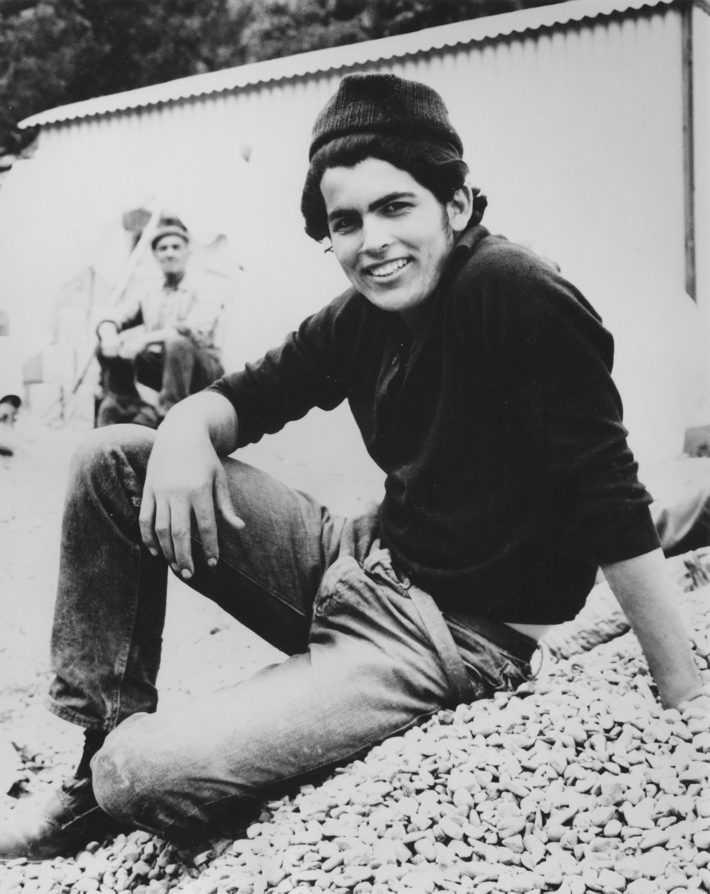
Portrait of a Construction Worker, 1964-71. Photo: John Swope, © Hotel Il Pellicano.
Has anything stayed the same?
I’ve tried to preserve a lot of things. The logo has stayed the same. We’ve moved the wrought iron of the bar, reused it. The wall lamps are all original.
What’s the part you like best in a hotel?
The bed. It has to be very comfortable and high.
What’s your home like? As perfect as your hotel?
No, it’s the opposite. I’m very messy. In the way I think too, I have a logic all my own.
You’re a creative person.
With a great sense of the practical.
In the introduction he wrote for the aforementioned Eating at Hotel Il Pellicano, Will Self spoke of sprezzatura with regard to you and Il Pellicano, quoting Baldassarre Castiglione. Everything about you appears splendidly nonchalant, natural, effortless. How do you achieve this quality?
In reality, behind this sprezzatura there is a great commitment, an enormous amount of work, but work that is done with a lightness of touch, with the maximum of naturalness. And in the end the effort turns into a spontaneous gesture.
There are ugly hotels that still express something and you’re willing to overlook the fact that they’re not very clean or neat as a new pin. Has this ever happened to you?
Yes, in Los Angeles, a hotel that was wonderful even though it wasn’t spick-and-span. But this is not something everyone finds easy to understand, so you need to try to bring out the potential, bring it to light so that others can sense it.
A sort of translation.
Yes, that’s exactly it.
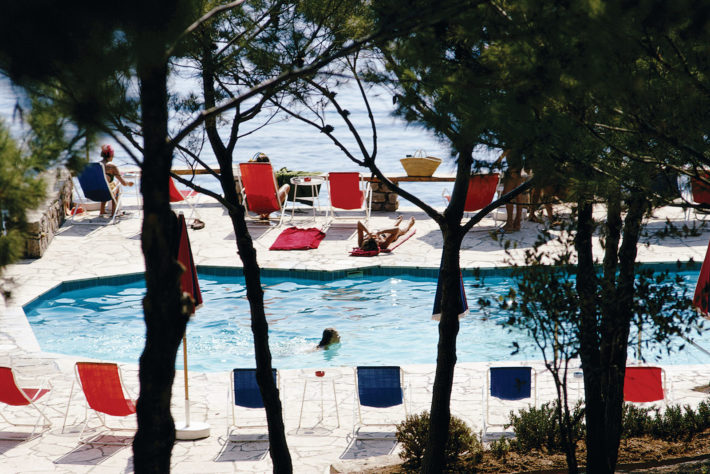
The Swimming Pool at Il Pellicano, 1973. Photo: Slim Aarons, © Hotel Il Pellicano.
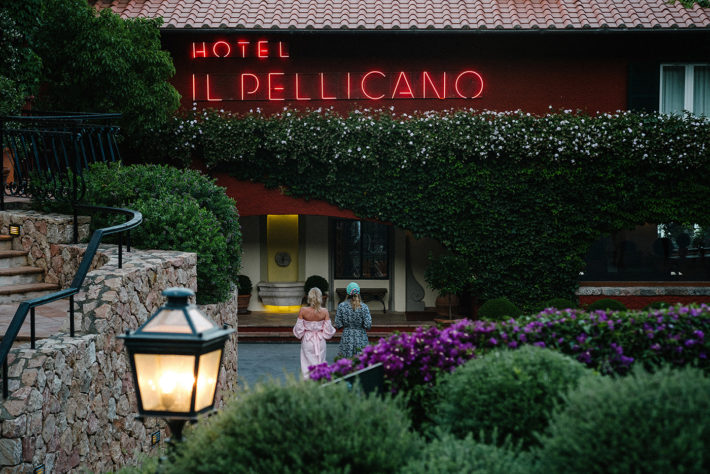
Arrival at the Hotel Il Pellicano, Porto Ercole. Courtesy of Pellicano Hotels.
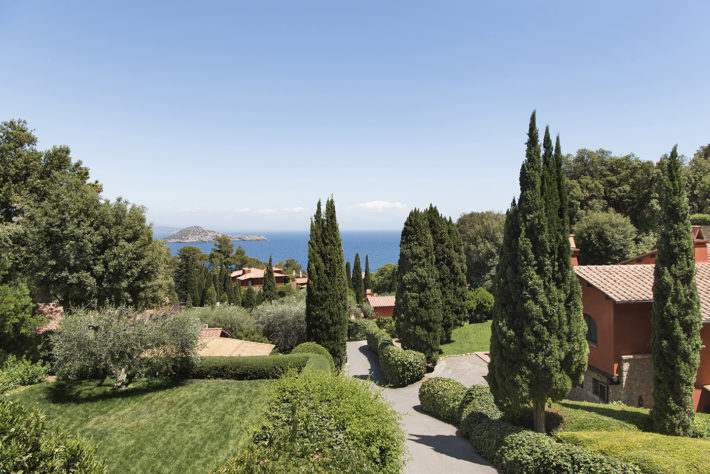
View of the gardens of the Hotel Il Pellicano, Porto Ercole. Courtesy of Pellicano Hotels.
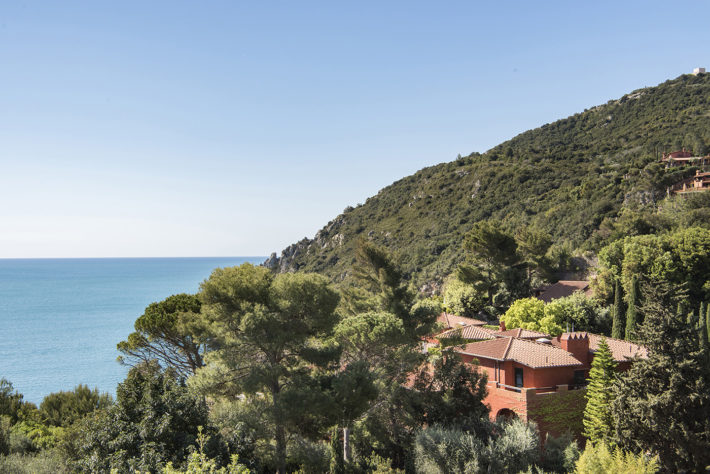
View from the Hotel Il Pellicano, Porto Ercole. Courtesy of Pellicano Hotels.
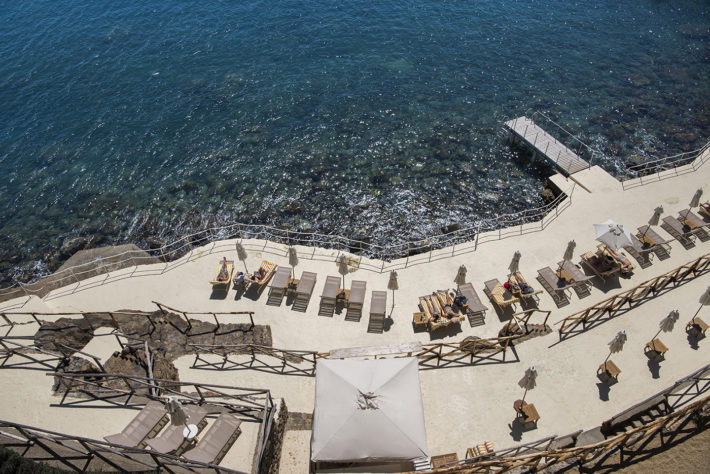
Hotel Il Pellicano, private beach, Porto Ercole. Courtesy of Pellicano Hotels.
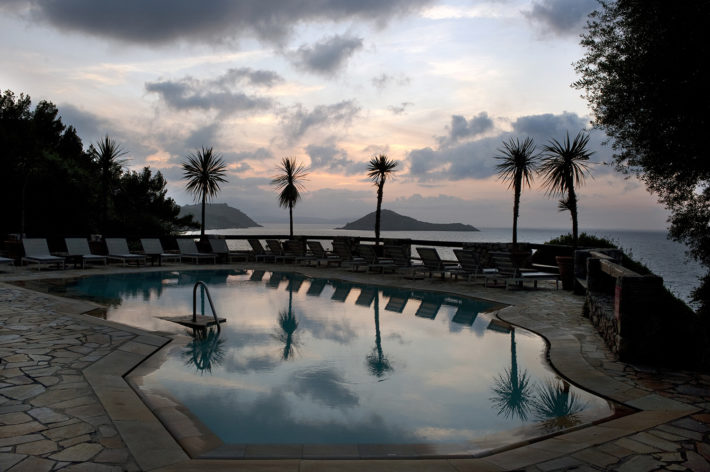
Sunset from the swimming pool of the Hotel Il Pellicano, Porto Ercole. Courtesy of Pellicano Hotels.

Striped cashmere sweater, Issimo x Chinti & Parker; Jambo-Issimo sunglasses, Issimo x L.G.R.; Fortissimo Il Pellicano bracelet, Issimo x Carolina Bucci.

La Posta Vecchia scarf, 16h23, Issimo x Les Belles Heures; The Brigitte bikini, Issimo x Solid & Striped; Fortissimo Il Pellicano and Fortissimo Mezzatorre bracelets, Issimo x Carolina Bucci; Turkana-Issimo sunglasses, Issimo x L.G.R.
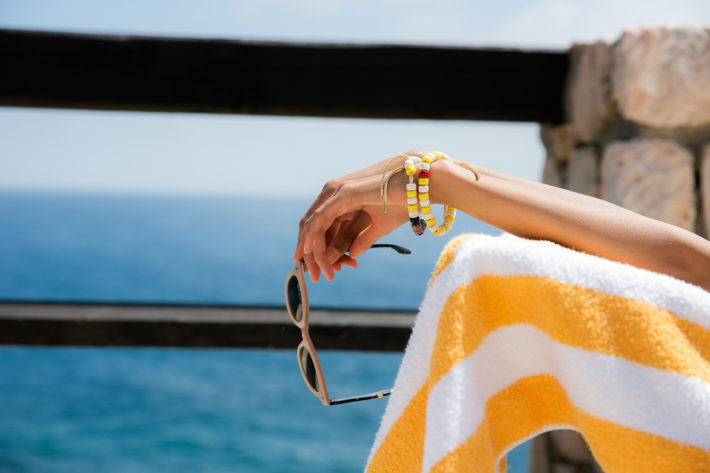
Fortissimo Il Pellicano bracelets, Issimo x Carolina Bucci; Turkana-Issimo sunglasses, Issimo x L.G.R.
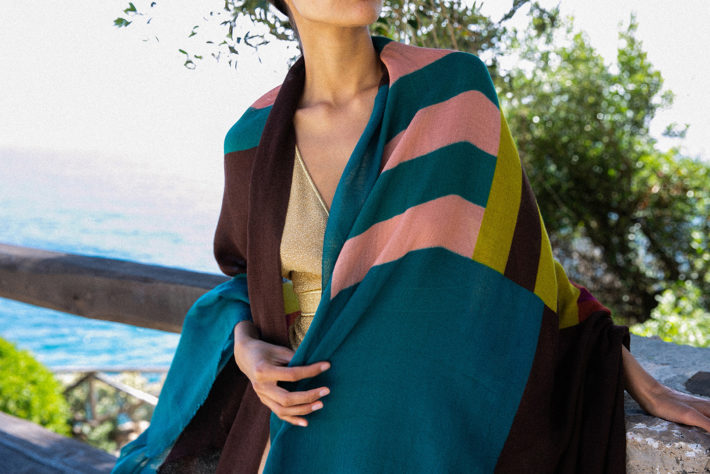
Lucca scarf, Issimo x Faliero Sarti; Lumiére Deep-V Maillot one-piece swimsuit by Oséree.
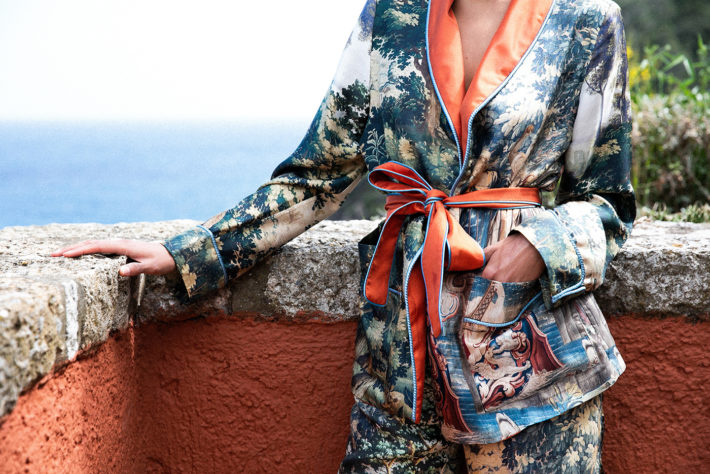
La Posta Vecchia Tapestry pajamas, Issimo x F.R.S. (For Restless Sleepers).

Karen Skarreso Sunbathing on the Jetty, 1964-71. Photo: John Swope, © Hotel Il Pellicano.
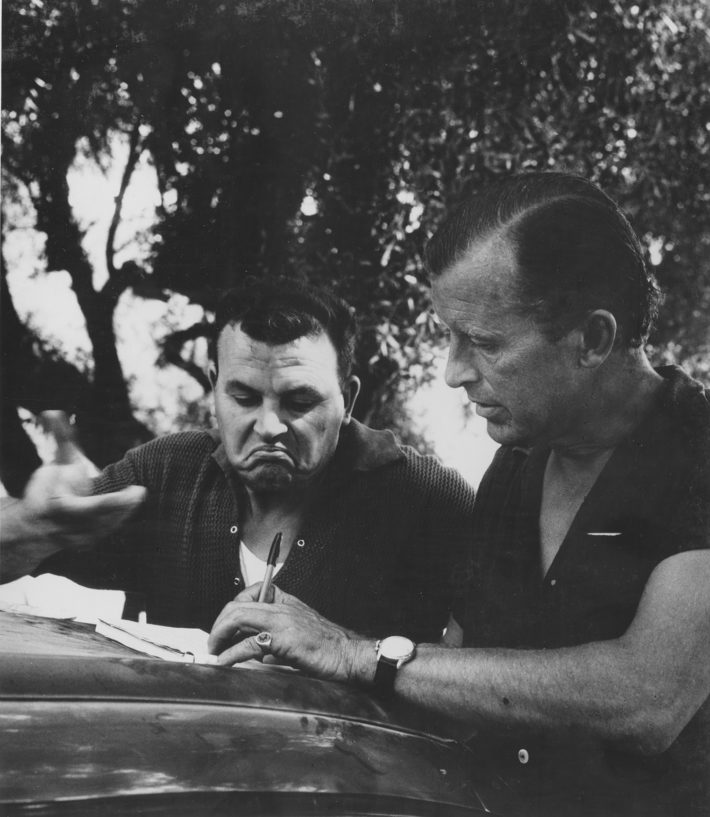
Michael Graham, 1964-71. Photo: John Swope, © Hotel Il Pellicano.
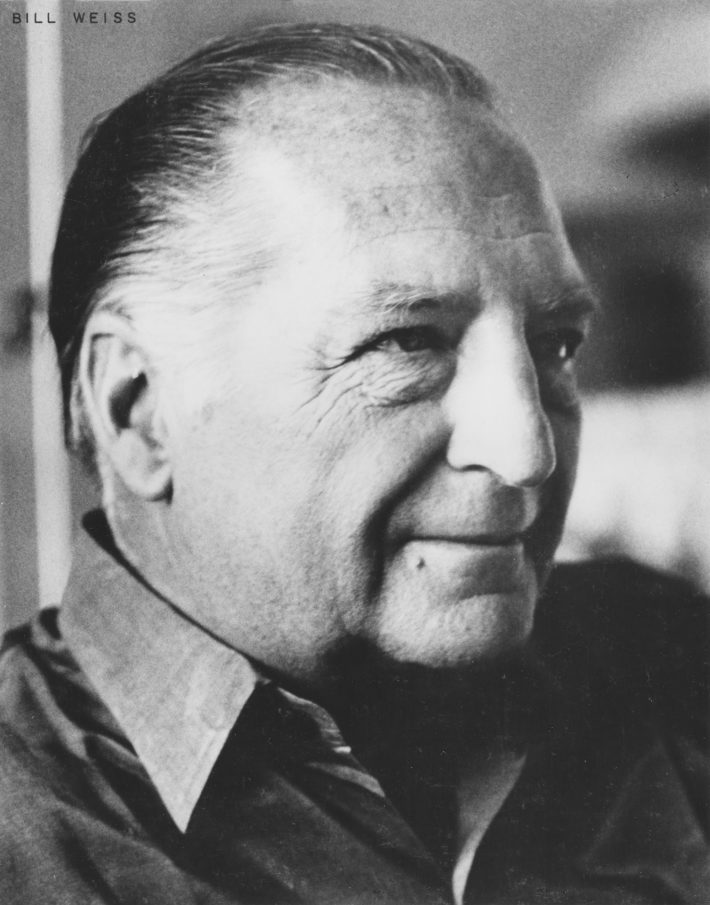
Bill Weiss, 1964-71. Photo: John Swope, © Hotel Il Pellicano.
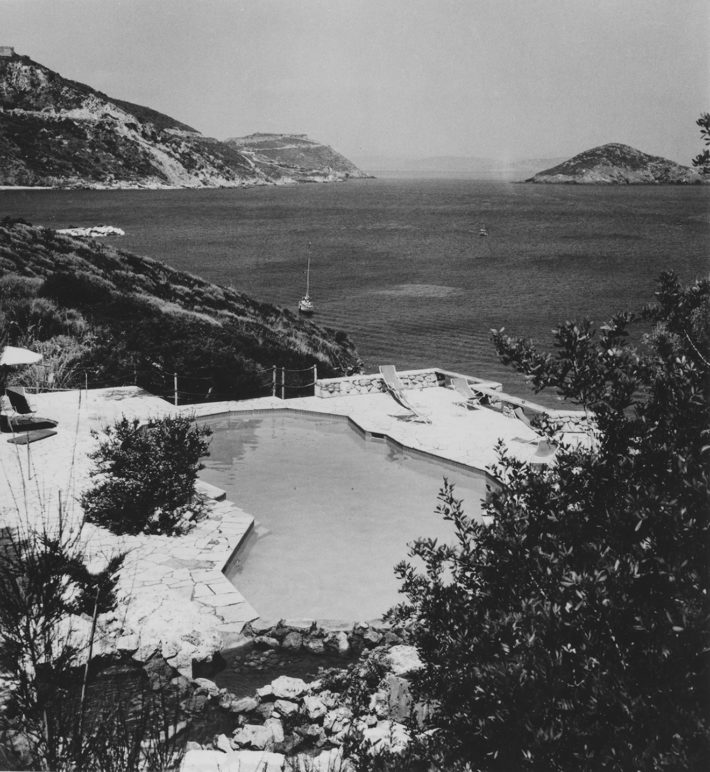
The Pool at Il Pellicano, 1964-71. Photo: John Swope, © Hotel Il Pellicano.